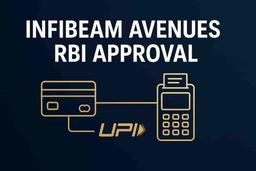India's real estate sector is demonstrating steady resilience, driven by sustained demand, stable financing, and disciplined supply across major cities. Despite external economic pressures, positive sentiment persists, boosted by strong activity in premium housing and office leasing. Knight Frank-NAREDCO's assessment highlights improving sentiment scores and optimism, particularly in the southern region, with developers cautiously recalibrating launches while non-developers remain confident in funding and asset quality.
India's real estate sector is exhibiting notable steadiness, with developers, investors, and occupiers reporting resilient demand, stable financing conditions, and disciplined supply in key urban areas. This constructive sentiment is maintained despite ongoing external economic challenges, primarily supported by robust activity in premium housing and office leasing.
A combination of stable, relatively lower interest rates and easing inflation has further bolstered confidence, ensuring supportive liquidity and consistent funding channels, according to a Knight Frank-NAREDCO assessment.
The market participants have observed a pattern where buyers and occupiers focus on essential segments, and developers strategically adjust project launches to prevent oversupply, especially in lower-priced housing segments.
"The sustained optimism underscores the sector’s resilience and adaptability. Both current and future sentiment scores remain comfortably in the positive zone, reaffirming confidence in India’s economic stability and long-term growth story. Demand in the premium residential segment remains healthy, while the office market continues to demonstrate structural depth with strong leasing pipelines," stated Shishir Baijal, CMD, Knight Frank India.
The current sentiment score improved to 59 from 56 last quarter, marking the highest reading this year, while the future sentiment score remained stable at 61, indicating expectations of sustained momentum.
Regionally, the southern part of India leads in optimism, fueled by strong office activity in Bengaluru and Hyderabad, alongside high-ticket home demand. The northern region is recovering, supported by steady leasing in the National Capital Region (NCR). The eastern region saw moderation due to fewer residential launches, and the western region eased slightly, with office absorption in Mumbai and Pune balancing slower residential sales.
While developers expressed caution regarding elevated input costs and slower movement in mid to low-income housing, non-developers such as banks, financial institutions, and private equity funds maintained a positive outlook, backed by strong liquidity and asset quality.
In the residential segment, 71% of survey respondents anticipate stable or rising launches, and 74% foresee steady or improving sales. Price expectations remain firm, with 92% expecting stability or an increase; NCR, Bengaluru, and Hyderabad recorded 13-19% year-on-year price gains in the September quarter.
The office segment is highly optimistic, with 78% expecting stable or rising new supply and 95% anticipating steady or increasing rents, driven by tight Grade A availability and rising pre-commitments.
Impact
This news suggests a positive outlook for India's real estate sector, which is a significant contributor to GDP and employment. It indicates stability and growth potential, which can boost investor confidence in related listed companies, construction material suppliers, and financial institutions. The sustained demand in premium housing and office spaces points towards a healthy economy and increasing business activity.
Rating: 7/10
Difficult Terms:
Resilient Demand: Consistent buyer interest and purchasing power even during challenging economic periods.
Disciplined Supply: Developers carefully manage the number of new projects and units launched to match market demand, avoiding overstocking.
Premium Housing: Residential properties situated at the higher end of the price spectrum, typically featuring superior amenities, design, and location.
Office Leasing: The process where companies rent office spaces for their business operations.
Liquidity: The availability of cash or assets that can be quickly converted into cash without significant loss of value, essential for financial transactions.
Funding Channels: The various avenues through which businesses can obtain financial resources, such as bank loans, equity investments, or debt financing.
Stakeholders: Individuals or entities that have a vested interest in the real estate sector, including developers, investors, homebuyers, and tenants.
Sentiment Score: A metric used to gauge the overall mood or feeling of market participants towards the current state and future prospects of the real estate market.
High-ticket homes: Expensive residential properties that command a high sale price.
Absorption: The rate at which available real estate inventory (e.g., residential units, office spaces) is sold or leased out to buyers or tenants.
Input Costs: The expenses incurred by developers for materials, labor, and other resources required to construct properties.
Grade A Availability: Refers to the availability of prime, high-quality office spaces that meet the highest standards in terms of location, building quality, and amenities.
Pre-commitments: Agreements made by potential tenants to lease office space in a building before its construction is completed or it is ready for occupancy.










